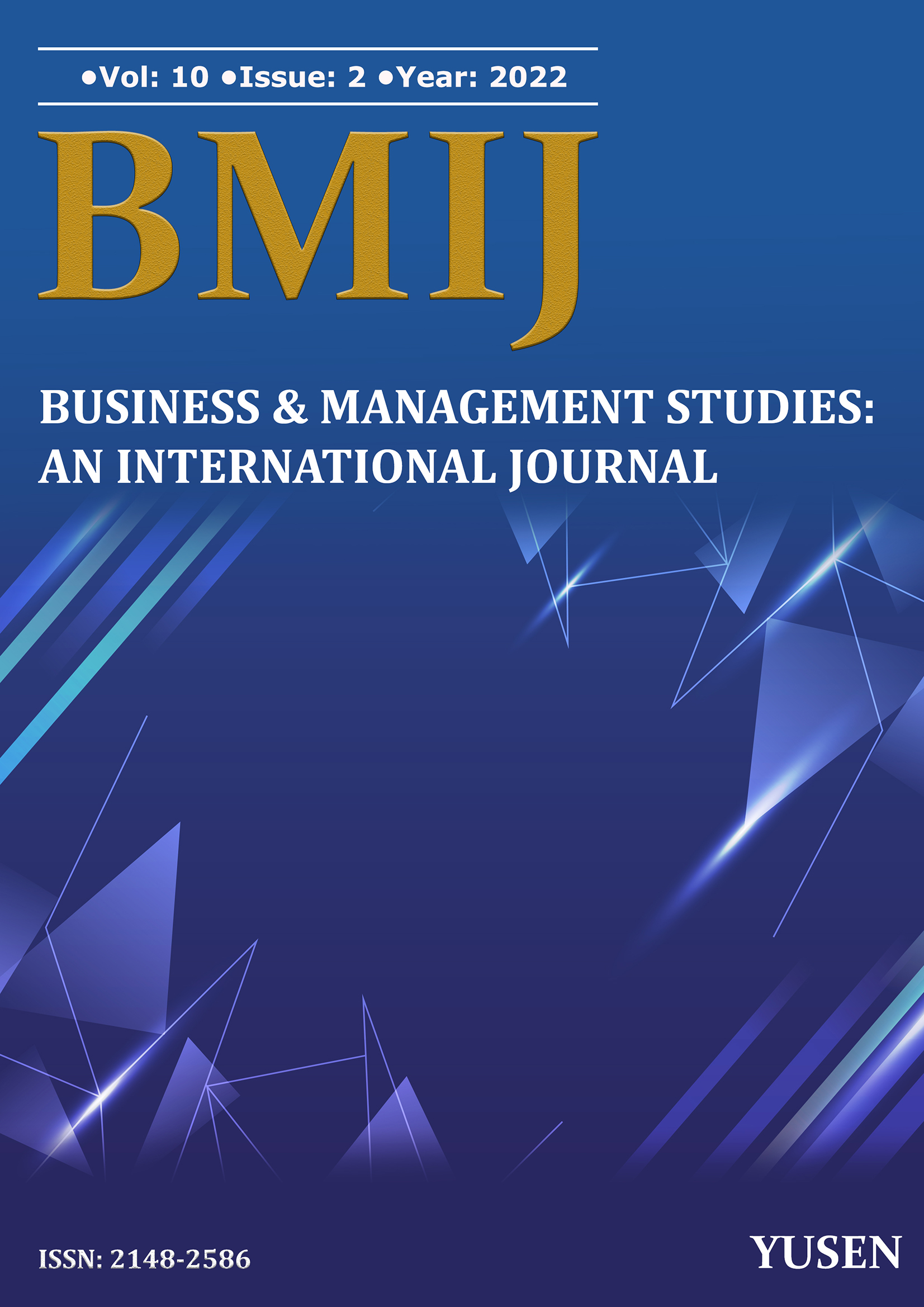
Published 2022-06-25
Keywords
- Doğal Oranlar, Yeni Keynesyen Hibrid Phillips Eğrisi, GMM, Araç Değişkenler
- Natural Rates, New Keynesian Hybrid Phillips Curve, GMM, Instrumental Variables
How to Cite
Copyright (c) 2022 Hüseyin Utku DEMİR

This work is licensed under a Creative Commons Attribution-NonCommercial-NoDerivatives 4.0 International License.
Abstract
Literature suggests that measures of slack such as unemployment, output, labour share, and inflation have been separated in recent years, particularly after the global crisis. Some claimed that the Phillips curve had vanished. Because of the unobservable nature of the natural rates, estimation of the output and unemployment gaps might not offer precise outcomes. The inflation model permits a fraction of firms that use a backwards-looking rule to set prices, as Gali and Gertler (2000) did. The essential contrast between their paper and mine is that they utilized marginal cost estimates as the applicable determinant of inflation, and I utilized the estimated output gap. Gali and Gertler supposed real marginal costs are a significant determinant of inflation. They also believed the output gap was negative and inconsequential. I have indicated that a precise output gap estimate is significant and positive. CBO output gap is also used to inspect for robustness. However, it was also insignificant, as the literature suggests. Therefore, the model used the estimated output gap instead of marginal cost. I calculated the output gap with a new methodology and could replicate their results with the new measure. I extended their study to 2019Q4; It is showed that their measure for inflation slack which was marginal cost becomes insignificant; however, my measure of the output gap is still significant. Therefore, it was inferred that the New Keynesian Phillips curve reasonably still explains inflation dynamics. I also concluded that the hybrid new Keynesian Phillips curve might explain the inflation dynamics.
Downloads
References
- Bai, J. (1997). Estimating Multiple Breaks One at a Time. Econometric Theory, 13(3), 315–352. https://doi.org/10.1017/S0266466600005831
- Bai, J., & Perron, P. (1998). Estimating and Testing Linear Models with Multiple Structural Changes. Econometrica, 66(1), 47. https://doi.org/10.2307/2998540
- Bai, J., & Perron, P. (2003). Computation and analysis of multiple structural change models. Journal of Applied Econometrics, 18(1), 1–22. https://doi.org/10.1002/JAE.659
- Ball, L., & Mankiw, N. G. (2002). The NAIRU in Theory and Practice. Journal of Economic Perspectives, 16(4), 115–136. https://doi.org/10.1257/089533002320951000
- Bobeica, E., Jaroci´nski, M., European, J., & Bank, C. (2019). Missing Disinflation and Missing Inflation: A VAR Perspective *.
- Calvo, G. A. (1983). Staggered prices in a utility-maximizing framework. Journal of Monetary Economics, 12(3), 383–398. https://doi.org/10.1016/0304-3932(83)90060-0
- Coibion, O., & Gorodnichenko, Y. (2015). Information Rigidity and the Expectations Formation Process: A Simple Framework and New Facts. American Economic Review, 105(8), 2644–2678. https://doi.org/10.1257/AER.20110306
- Demir, H. (2020). Three Essays on Natural Rates. Dissertations, Theses, and Capstone Projects. https://academicworks.cuny.edu/gc_etds/3937
- Fuhrer, J. C. (1997). The (Un)Importance of Forward-Looking Behavior in Price Specifications. Journal of Money, Credit and Banking, 29(3), 338. https://doi.org/10.2307/2953698
- Gali, J., & Gertler, M. (2000). Inflation Dynamics: A Structural Econometric Analysis. https://doi.org/10.3386/W7551
- Galıá, J., Gertler, M., & David Lo´pezlo´pez-Salido, J. (2005). Robustness of the estimates of the hybrid New Keynesian Phillips curve. Journal of Monetary Economics, 52, 1107–1118. https://doi.org/10.1016/j.jmoneco.2005.08.005
- Hansen, L. P. (1982). Large Sample Properties of Generalized Method of Moments Estimators. Econometrica, 50(4), 1029. https://doi.org/10.2307/1912775
- McLeay, M., & Tenreyro, S. (2020). Optimal Inflation and the Identification of the Phillips Curve. Https://Doi.Org/10.1086/707181, 34(1), 4–255. https://doi.org/10.1086/707181
- Mehra, Y. P. (2004). The Output Gap, Expected Future Inflation and Inflation Dynamics: Another Look. SSRN Electronic Journal. https://doi.org/10.2139/SSRN.2184948
- Roberts, J. M. (1995). New Keynesian Economics and the Phillips Curve. Journal of Money, Credit and Banking, 27(4), 975. https://doi.org/10.2307/2077783
- Rudd, J. B., & Whelan, K. (2005). Does labor’s share drive inflation? Journal of Money, Credit and Banking : JMCB, 37(2).


